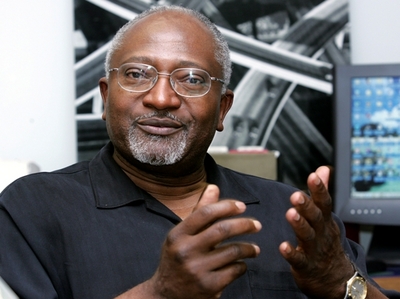The Barbara Jordan-Mickey Leland School of Public Affairs at Texas Southern University kicks off Invisible Houston Revisited, an initiative that follows up Invisible Houston: The Black Experience in Boom and Bust, a book I wrote nearly three decades ago that critically examined the major demographic, social, economic, and political factors that helped make Houston the "golden buckle" of the Sunbelt.
Call for Papers -- Summit and Book Project
The School of Public Affairs is now soliciting authors for commissioned papers for Invisible Houston Revisited, Three Decades Later Policy Summit to be held at Texas Southern University on November 7, 2013. The one--day Summit is an interdisciplinary forum for scholars, researchers, practitioners, planners, educators, policy analysts, health professionals, elected officials, faith leaders and others from a wide array of professional fields who share an interest in policy actions needed to address social inequality in a holistic cross-disciplinary way. The Summit is co-sponsored by the Mickey Leland Center and the Barbara Jordan Institute for Policy Research.
Houston is a different city today than it was three decades ago. The city's demographics and neighborhoods have undergone dramatic change. Nowhere is this change more striking than in Houston historic Freedmen's Town-Fourth Ward, a neighborhood settled by newly freed slaves and their families. Today, time is running out on the last full block of ten row houses in Freedmen's Town. The neighborhood is quickly being converted into lofts and condos.
The Summit seeks to shed light on a number of questions. What is the state of Black Houston today? To what extent has Black Houston closed the economic and well-being gap with its white counterpart over the past three decades? How has Black-White inequality in Houston trended during boom and bust cycles? Now that Houston has regained its boom town status, the question remains, is Black Houston booming? Are Black Houstonians reaping comparable benefits from the city's economic growth? Are there structural impediments that block opportunity? What policy changes are needed to address current and emerging challenges facing Black Houston?
Houston Then and Now
Houston is the fourth-largest city in the United States, and the largest city in the state of Texas. According to the 2010 U.S. Census, the city had a population of 2.09 million people of which 23.7 percent were African Americans. With 514,217 African Americans in 2010, Houston's black population was the largest of any city in the South and ranked fifth in size of all U.S. cities, behind New York City, Chicago, Philadelphia, and Detroit.
The city was described as "Boomtown USA" and the " Golden Buckle of the Sunbelt" in the 1970s, growing through tremendous in-migration of people and frequent annexation of outlying areas, and always boasting from city hall and the Houston Chamber of Commerce of its low-cost no-zoning, pro-business methods of operation. But in the shadow of the high-rise "petropolis" was another city, ignored by and invisible to Houston municipal boosters and the national media. Black Houston, the largest black community in the South, remained largely untouched by the benefits of the boom but bore many of the burdens. The economic downturn and oil bust era of the 1980s hit Black Houston especially hard.
(Note: You can view every article as one long page if you sign up as an Advocate Member, or higher).





